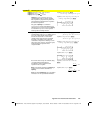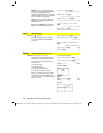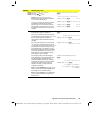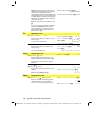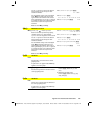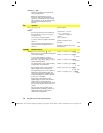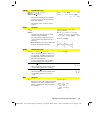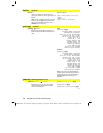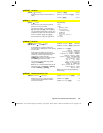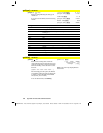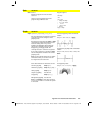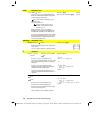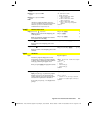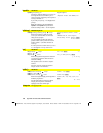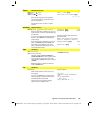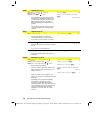
Appendix A: Functions and Instructions 453
8992APPA.DOC TI-89 / TI-92 Plus: Appendix A (US English) Susan Gullord Revised: 02/23/01 1:48 PM Printed: 02/23/01 2:21 PM Page 453 of 132
getFold()
CATALOG
getFold()
⇒
nameString
Returns the name of the current folder as a
string.
getFold()
¸
"main"
getFold()
!
oldfoldr
¸
"main"
oldfoldr
¸
"main"
getKey()
CATALOG
getKey()
⇒
integer
Returns the key code of the key pressed.
Returns 0 if no key is pressed.
The prefix keys (shift
¤
,
second function
2
, option
¥
, alpha
j
, and drag
‚
) are
not recognized by themselves; however, they
modify the keycodes of the key that follows
them. For example:
¥Ù
ƒ
Ù
ƒ
2Ù
.
For a listing of key codes, see Appendix B.
Program listing:
:Disp
:Loop
: getKey
()
!
k
ey
: w
h
i
l
e
k
ey=0
: getKey
()
!
k
ey
: En
d
W
h
i
l
e
: Disp
k
ey
: If
k
ey = or
d(
"a"
)
: Stop
:En
d
Loop
getMode
()
CATALOG
getMode(
modeNameString
)
⇒
string
getMode("ALL
"
)
⇒
ListStringPairs
If the argument is a specific mode name,
returns a string containing the current setting
for that mode.
If the argument is
"ALL"
, returns a list of
string pairs containing the settings of all the
modes. If you want to restore the mode
settings later, you must store the
getMode("ALL")
result in a variable, and then
use
setMode()
to restore the modes.
For a listing of mode names and possible
settings, see
setMode()
.
Note: To set or return information about the
Unit System
mode, use
setUnits()
or
getUnits()
instead of
setMode()
or
getMode()
.
getMode("angle")
¸
"RADIAN"
getMode("graph")
¸
"FUNCTION"
getMode("all")
¸
{
"Grap
h
" "FUNCTION"
"Disp
l
ay Digits" "FLO
A
T 6"
"
A
ng
l
e" "R
A
DI
A
N"
"Exponentia
l
Format" "NORM
A
L"
"Comp
l
ex Format" "RE
A
L"
"Vector Format" "RECT
A
NGUL
A
R"
"Pretty Print" "ON"
"Sp
l
it Screen" "FULL"
"Sp
l
it
1
A
pp" "Home"
"Sp
l
it 2
A
pp" "Grap
h
"
"Num
b
er of Grap
h
s" "
1
"
"Grap
h
2" "FUNCTION"
"Sp
l
it Screen Ratio" "
1
,
1
"
"Exact
/A
pprox" "
A
UTO"
"Base" "DEC"
}
Note: Your screen may display different
mode settings.
getNum()
MATH/Algebra/Extract menu
getNum(
expression1
)
⇒
expression
Transforms
expression1
into one having a
reduced common denominator, and then
returns its numerator.
getNum((x+2)/(y
ì
3))
¸
x
+
2
getNum(2/7)
¸
2
getNum(1/x+1/y)
¸
x
+
y



